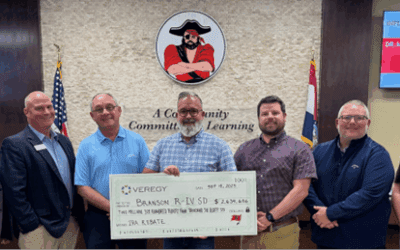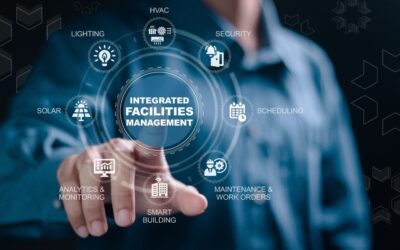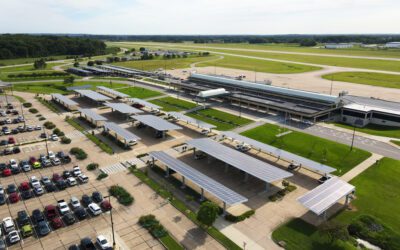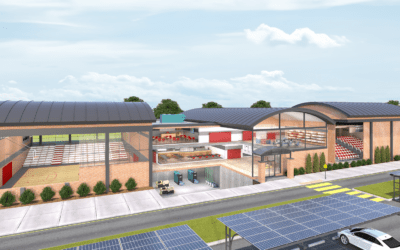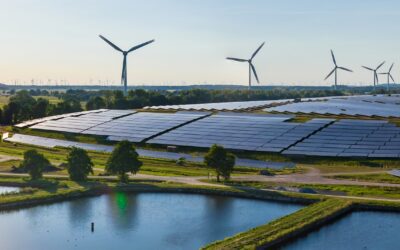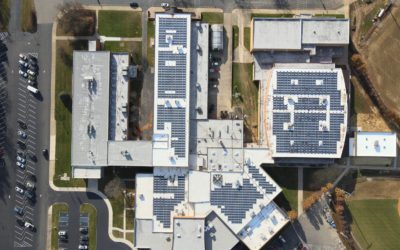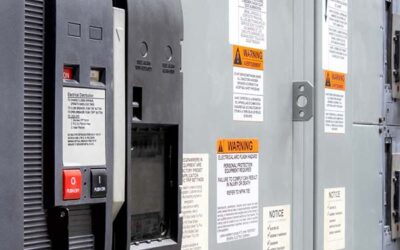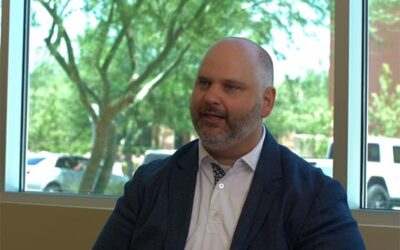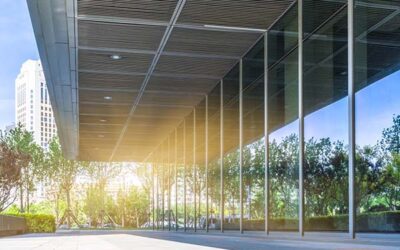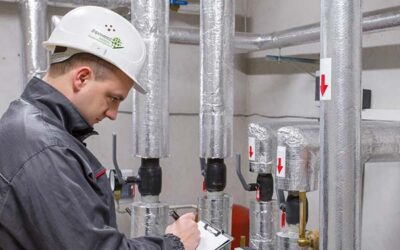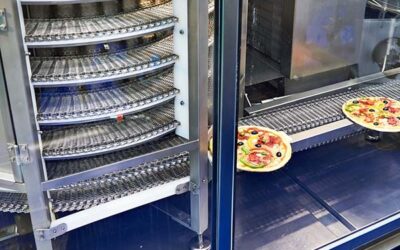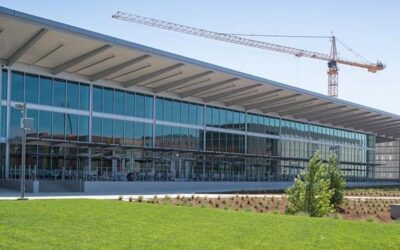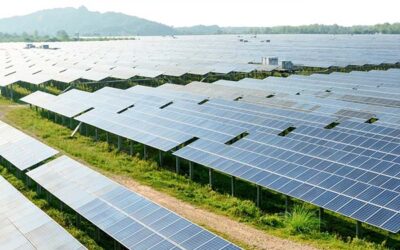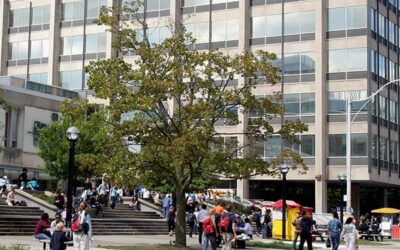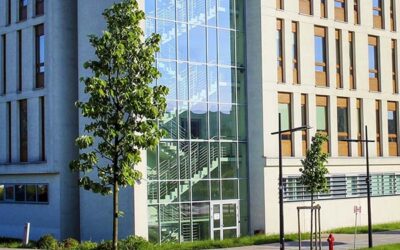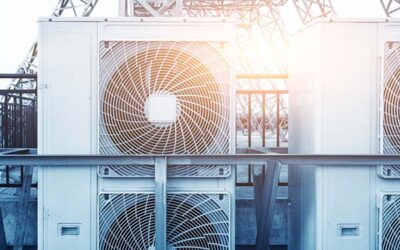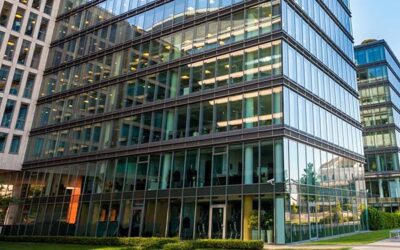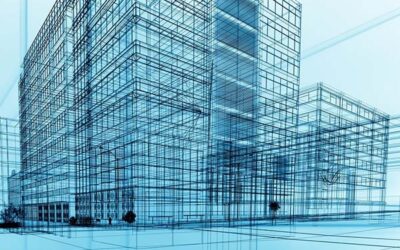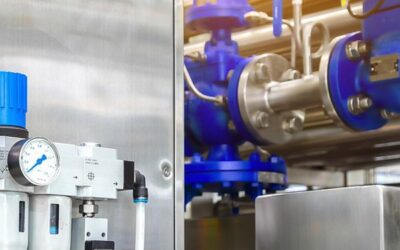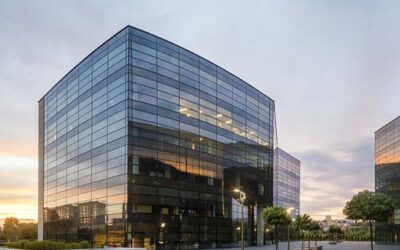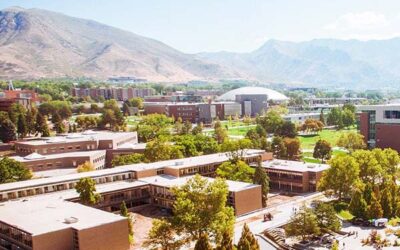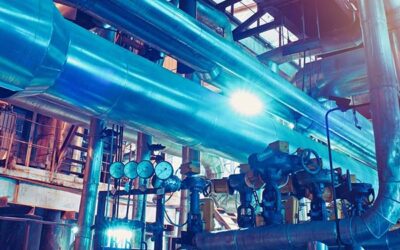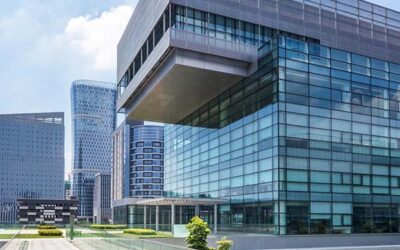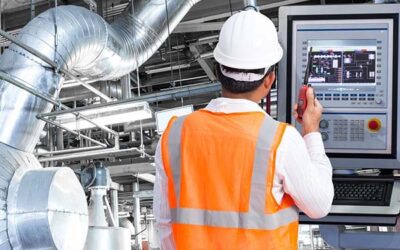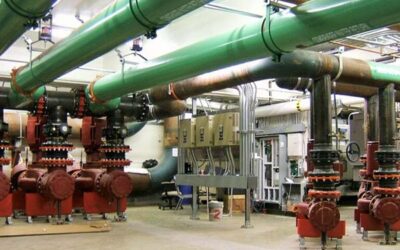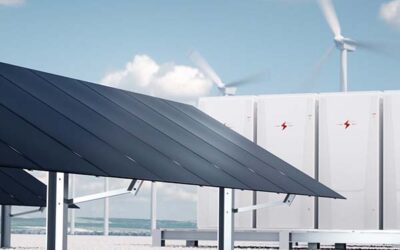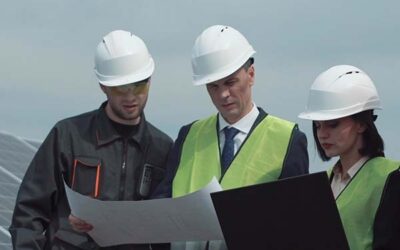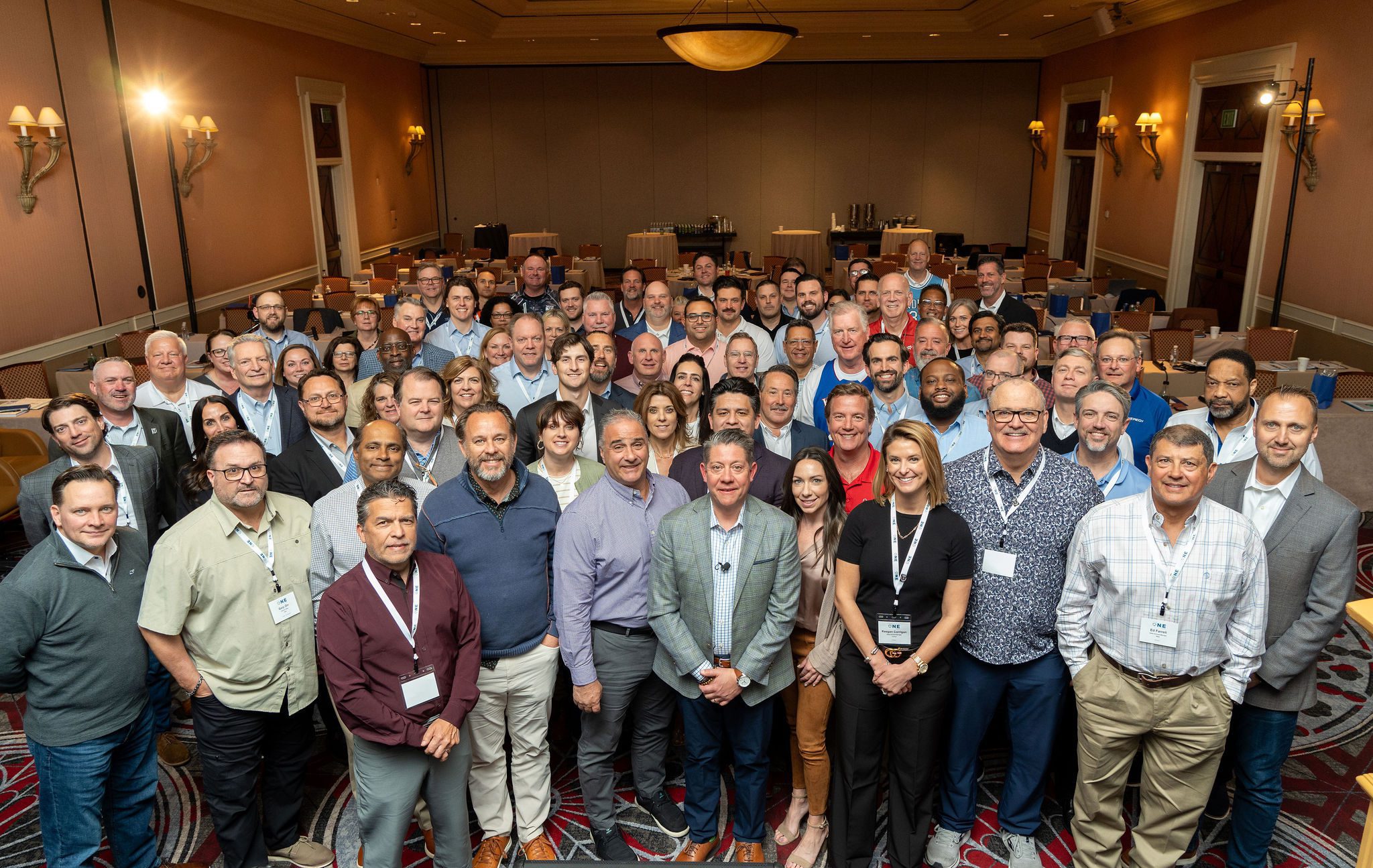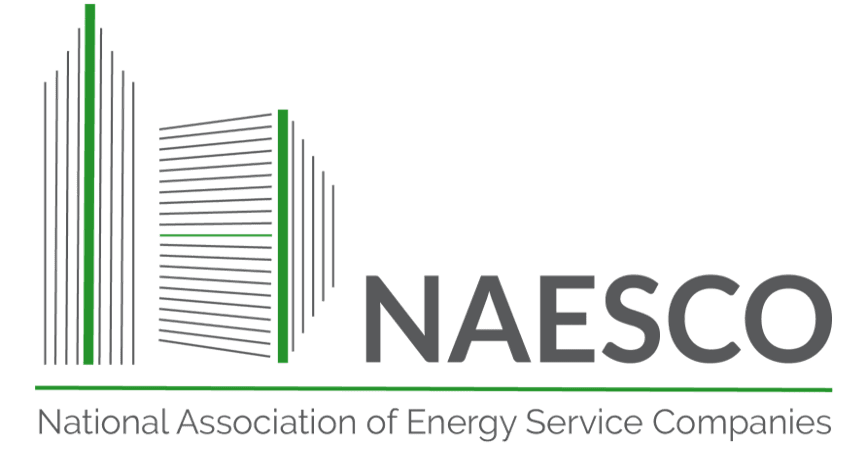THOUGHT LEADERSHIP
Veregy’s Industry Insights
Read the Latest Thought Leadership articles from the Veregy team.
Missouri Schools Win Big with Over $9.3 Million in Funding for Veregy Geothermal Projects
Branson R-IV, Springfield Public Schools, and Tarkio R-I have been awarded more than $9.3 million in federal funding through the Inflation Reduction Act’s (IRA) Direct Pay program to support groundbreaking geothermal projects developed by Veregy.
Village of Deerfield Set to Break Ground on Solar Project to Advance Sustainability and Reduce Costs
The Village of Deerfield is moving forward with a significant step toward sustainability and long-term energy savings with a 574.6 kW-DC ground mount solar array at the Village’s Wastewater Treatment Plant.
Missouri Schools Win Big with Over $9.3 Million in Funding for Veregy Geothermal Projects
Branson R-IV, Springfield Public Schools, and Tarkio R-I have been awarded more than $9.3 million in federal funding through the Inflation Reduction Act’s (IRA) Direct Pay program to support groundbreaking geothermal projects developed by Veregy.
Beyond Bricks and Mortar: The Power of Smart Technology in Public Building Projects
Public sector facilities don’t have to be a constant drain on tight budgets. Discover how smart building technology—featuring IoT sensors, data analytics, and intelligent automation—is helping school districts, municipalities, and government agencies slash operational costs while creating more comfortable, productive spaces.
$28 Million Jackson County Energy Project Receives Media Attention
Fox 47 News in Jackson, Michigan spotlighted Veregy’s $35.5M+ energy project with Jackson County, featuring solar, geothermal, building automation, HVAC upgrades, LED lighting, and wastewater treatment. The project is funded through federal funds and energy savings at zero net cost to the County.
Protecting Your Solar Array: 5 Key Benefits to Safeguarding Your Investment
While solar panels are known for their durability and low-maintenance nature, a thorough solar maintenance plan can significantly enhance performance and protect your investment over the long run. The following are the top five benefits of implementing a solar maintenance plan for your project.
Cultivating the Future Leaders of Sustainable Infrastructure
Veregy is committed to supporting Science, Technology, Engineering, and Mathematics (STEM) education by nurturing the future workforce through real-world programs that improve career outcomes and further sustainability education. Veregy is proud to provide an innovative internship that provides students with a hands-on vocational learning experience.
Geothermal: Leveraging the Earth’s Renewable Energy
Exploring geothermal heating and cooling systems for your facilities is a transformative step toward creating efficient, sustainable, and comfortable environments. By leveraging the earth’s natural energy, you can achieve substantial energy savings, reduce operating costs, extend system life, and prioritize environmental sustainability.
Unlocking Efficiency and Sustainability: The Benefits of Integrated Facilities Management
In today’s fast-evolving environments, facility managers face increasing pressure to optimize building performance, reduce operational costs, and enhance occupant comfort. However, the challenge often lies in managing many stand-alone facility systems and equipment—HVAC, lighting, security, energy monitoring, and other systems—each operating in isolation. This fragmented approach can lead to inefficiencies, deferred maintenance, and excessive energy and operational costs.
Improving The Manufacturing Process
Efficiency in manufacturing is more than simple input and output numbers (i.e., productivity). It also encompasses reducing waste and rework, improving quality, eliminating unscheduled downtime, and enhancing worker safety. As a result, setting production efficiency goals expands the focus beyond just productivity.
Empowering Tribal Communities: The Path to Energy Sovereignty
In the “Tribal Energy Sovereignty” episode of the Tribal Energy Universe podcast, Guilermo Gomez and Chris Deschene discuss the importance of energy independence for tribal communities, exploring strategies to harness renewable resources and promote sustainability. This conversation highlights the challenges and opportunities tribes face in achieving self-sufficient energy systems.
Strategic Facility Planning: Managing Aging Infrastructure
Many schools over 15 years old are presenting superintendents with challenges like aging infrastructure and rising operational costs…
Energizing Education: Integrating Solar Energy Curriculum at K-12 Schools Across the Nation
As solar becomes increasingly prevalent, K-12 leaders have a unique opportunity to integrate solar curriculum in their schools which will result in increased cost savings, reduced carbon emissions, new experiential learning opportunities, and more interest in sustainability-focused careers.
The Bright Future of Solar Power at Airports
As the aviation industry grapples with rising energy costs and increasing pressure to reduce carbon emissions, airports are turning to solar power as a sustainable and economically viable solution. The installation of solar panels at airports not only supports...
Seize the Opportunity: A Market Update on Funding, Incentives, Lead Times, and Costs
By Garry Montgomery, PE, LEED AP In these dynamic times, the industry landscape is evolving at an unprecedented pace, and as your trusted energy services and facility improvement partner, we want to ensure you're well-positioned to harness the benefits available to...
Maintaining Excellent K-12 Facilities Using a Systemic Approach
By: Jon Saxton This article was published in the Fall 2023 issue of the Buckeye Association of School Administrators AdminiScope. A systemic approach to facility management involves considering the entire facility as an interconnected system, understanding how various...
Illuminating the Game: The Benefits of LED Lighting
Illuminating the Game: The Unparalleled Benefits of LED Lighting for High School Athletic Fields By Rob Coy and Becky Werra, Veregy, LLC and Musco In sports, stadium lighting quality plays a pivotal role in the overall experience for players, coaches, and spectators....
Unlocking the Potential of Advanced Metering Infrastructure (AMI)
Unlocking the Potential of Advanced Metering Infrastructure (AMI): A Pathway to Sustainable Water/Gas/Electric Management and Efficiency By Erin Perry and Becky Werra of Veregy, LLC In a period of rapid technological advancement, municipalities continually seek...
Solar and Landfills – Take Advantage of Untapped Land in Your Community
With the recent updates to Investment Tax Credits (ITC) under the Inflation Reduction Act (IRA), now is the time for your community to explore opportunities to use untapped real estate, such as decommissioned landfills, to install solar. It is difficult to provide an...
CalSHAPE Update – Program Extended Through May!
On January 12th, the California Energy Commission staff held an online CalSHAPE public workshop to gather input on Phase 2 of the Ventilation portion of the California Schools Healthy Air, Plumbing, and Efficiency Program (CalSHAPE). Signed into Law in September 2020,...
How to Utilize Tax Credits and Sustainable Innovation to Fund Roof Restorations
Making the Most of Tax Credits: Sustainable Roofing Solutions By: Lindsay Yazel and Doug Copley of Veregy, LLC Replacing roofs can be expensive. When facility upgrades are discussed, roof restoration is often overlooked but just as often, desperately needed. Why not...
The Global Push for Net-Zero Emissions: Advantages of Embracing Decarbonization
Embracing Decarbonization By: Haley Orr & Sumit Ray Climate change is real. Experts across the world, including in the United States, agree that we must act now to preserve the world in which we live. Greenhouse gases, especially carbon dioxide emissions, threaten...
Our Health and Environment are Intertwined, It’s Time to Consider Healthy Building Strategies
Engineering Healthier, Safer Spaces By Doug Smith & Cory Scamihorn Maintaining healthy buildings is all about using our buildings to work for us, not against us. As Winston Churchill once said, “We shape our buildings and afterwards our buildings shape us.”1 If we...
Capture Your AB-841 CalSHAPE Ventilation and Plumbing Round II Incentives
As leaders in obtaining funding for K-12 Districts and schools, we can quickly secure your funding before time runs out Applications Accepted On March 28, 2022 The California Energy Commission (CEC) announced that it is accepting applications for Funding Round Two...
Exploring the Critical Knowns and Unknowns of Transitioning Your Fleet to Electric Vehicles
Billions of Dollars Will Be Available Soon, Veregy Will Help You Navigate the Complexities
Unlocking the Full Value of Federal, State, and Local COVID Incentives for California Schools
As we enter the second year of the COVID-19 pandemic, there is increasing pressure to reopen schools safely amid concerns over learning loss and student mental health. To bolster these efforts, the federal government has passed a series of stimulus bills over the past...
5 Things to Help You with the Engineer in Training (EIT) Certification
I was recently awarded an Engineer in Training, or EIT, certification, and I cannot be more proud – and more relieved! Looking back, I realize that I had a lot of preconceived notions about the exam and the engineering field in general, and so I am writing this...
Advantages of Normalized Metered Energy Consumption (NMEC)
In the Introduction to Normalized Metered Energy Consumption (NMEC) article, we discussed what NMEC is, how it fits within the International Performance Measurement and Verification Protocol (IPMVP), some of its policy drivers, and ways to apply it to energy projects....
An Introduction to Normalized Metered Energy Consumption (NMEC)
Return on investment is a key driving force in most cost-related decisions. It is especially important to ensure that the investment delivers the promised performance when the expenditure is a large energy efficiency project. A building’s energy efficiency performance...
Veregy Talks About Healthy, Safer Sustainable Environments
Watch our Veregy Team talk about Healthy, Safer, and Sustainable Environments as we battle Covid-19.
Understanding the International Performance Measurement and Verification Protocol
It’s always important to make sure that an investment delivers the promised performance. The larger the investment, the more critical performance tracking is, especially for energy efficiency projects. A building’s energy efficiency performance is tracked through a...
What You Need to Know About LEED Zero
LEED Zero Energy is a recognized certification for achieving this rating. According to the New Buildings Institute (NBI), there are already 126 “Verified” ZE buildings submitted to NBI’s Getting to Zero Buildings Database in the USA, with an additional 523 “Emerging” (48 and 232 respectively in California).
5 Things You MUST Consider When Opening Up Your Building Post-Lockdown
Many state and local governments in the United States have put in place ‘safe reopening plans’ to guide or even govern building re-openings before occupants can get back to their previous mode of business. In addition to building safety, they also include consideration of occupant safety in relation to the coronavirus.
Getting to Know the Different Healthy Building Certifications
Even before COVID-19 and mandated social distancing, humans were spending an incredible amount of time indoors—roughly 90% of our time, in fact. All this time spent indoors has a tremendous impact on our health and wellness, but now, more than ever the quality of our building environments matters as concerns over limiting the spread of infectious diseases and maintaining air quality have prompted a closer look at the buildings in which we live, work, and operate.
Creating an Inviting Building Environment Post COVID-19
As the national press quickly captures and highlights the anxiety around built environments (note: Allen, Joseph. “Your Building Can Make You Sick Or Keep You Well.” New York Times, March 4, 2020), the good news is that there are organizations that are (and have been) working to identify standards for safer and healthier buildings that will generate greater peace of mind for tenants.
Saving Energy in Unoccupied Buildings
We know this is a difficult time for all, especially for businesses navigating the complexities of managing staff, suppliers, perhaps students, and remote access capabilities. We also know that managing your energy efficiently is likely not a top priority right now, and rightfully so, as health and safety must come first.
Measurement & Verification: Achieve Your Energy Savings Goals
New construction commissioning is often required by city or local codes, generally triggered by project size and/or systems included. New construction commissioning is also required for any project pursuing Leadership in Energy and Environmental Design (LEED) certification from the US Green Building Council (USGBC).
Maximizing Spiral Freezer System Efficiency in Frozen Foods Production
Unlock the full potential of your industrial spiral freezer system and achieve persistent energy savings year after year, while improving or maintaining the quality of food products being produced.
What is New Construction Commissioning?
New construction commissioning is often required by city or local codes, generally triggered by project size and/or systems included. New construction commissioning is also required for any project pursuing Leadership in Energy and Environmental Design (LEED) certification from the US Green Building Council (USGBC).
What is An Energy Action Plan?
Here are some of the popular strategies recommended by Energy Action Plans.
Energy Efficiency: Core strategies for almost every EAP. Actions for energy efficiency can include improving building standards and offering public incentive programs for home efficiency measures. For meeting EAP goals, energy efficiency strategies are often the best in terms of cost-effectiveness, reliability, and sustainability.
The Power of Collaborative Climate Action Planning
The King County City Collaborative (K4C) is a partnership between King County and seventeen cities in Washington State to enhance the effectiveness of their emission reduction and sustainability actions.
What are Climate Action Plans?
Climate Action Plans are being adopted all over the world by any government or organization that is motivated to take measurable actions on their climate impact. CAPs are used at all scales of government, from the federal level down to the states, counties, and cities.
PLC-Based Energy Management Systems for the Modern Manufacturing Facility
Discover the next generation of energy management and HVAC control for manufacturing facilities in the form of Programmable Logic Controllers (PLCs).
Retro-Commissioning: Increase Building Performance and Efficiency
Taking charge of the efficiency of your building is essential to reducing your utility expenditures and improving your organization’s bottom line. Having a competent commissioning authority on your team is essential when constructing new systems or substantially expanding existing ones.
The Ultimate Guide to LEED Certification
The certifying body for LEED certification is the USGBC, a private 501(c)3 membership-based non-profit that was established in 1993. The purpose of the USGBC is to promote sustainability in building design, construction, and operation, which is most prominently enacted through the LEED program.
Improve the Efficiency of Your Compressed Air System
Have you ever woken in the middle of the night in a cold sweat wondering if your plant is using more energy than it should, putting you at a disadvantage as compared to your competition? E
Enhanced Retro-Commissioning (ERCx)
Optimizing energy efficiency in an older building can present many opportunities and challenges. Depending on when the facility was constructed, you could be dealing with aging HVAC systems, outdated controls hardware, inefficient controls sequences of operation, and other systems designed for a building that has evolved away from its original design intent.
Monitoring-Based Commissioning for New and Existing Buildings
The key advantage of monitoring-based commissioning is the availability of a constant stream of data to inform decision-making. When faced with dynamic facility operations, it is essential to know how your building’s systems are responding to changing conditions.
Industrial Retro-Commissioning Generates Significant Energy Savings
Industrial facilities often focus on capital-intensive projects, such as equipment replacement, or the installation of devices or widgets to improve their energy performance instead of looking at the operations of the energy-consuming systems as a whole.
Introduction to Commissioning
Designers are the architecture and engineering professionals that decide how a building is to be constructed and how a proposed system will be integrated into the building. The contractors are the workers doing the actual physical construction: pouring concrete, wiring new system controls, installing new heat exchange components,
The Need for KPIs and Production Data in Energy Monitoring Systems
Have you ever woken in the middle of the night in a cold sweat wondering if your plant is using more energy than it should, putting you at a disadvantage as compared to your competition? E
Energy Terminology 101: The Basics of Energy Usage and Production
If you’re new to the world of energy production and usage, some of the scientific and engineering terminologies can feel a little intimidating. Knowing the basics will help you navigate opportunities for improving your energy efficiency, and guide your decision making. Our experts at Veregy have set out to answer your questions and define common energy terminology.
Achieving Resiliency: Why Every Business Needs an Energy Security Plan
The US Military is setting a strong example of building energy security on the installation-scale by employing more energy efficient systems, creating renewable energy generation sources, and building out energy storage on-base.
Three Best Kept “Secret” Energy Savings Programs for Manufacturers
Lawrence Berkeley National Laboratory recently concluded a study showing that the average cost of saving a kilowatt-hour of electricity was $.025. So, whether an industrial plant is paying $.05, $.10, or $.25/kWh, it makes a lot of sense to pursue energy efficiency opportunities.
What is Zero Net Energy?
Ultimately, your organization needs to make decisions that benefit the financial bottom line, and Zero Net Energy can be a great way to mitigate future energy costs. Choosing to build for Zero Net Energy can seem more expensive up front, but depending on conditions like climate and available space for solar, Zero Net Energy can be done for little or no additional cost.
Understanding Three Types of ASHRAE Audits and When You Need Them
The first level of ASHRAE energy audit is a simple audit, often called a preliminary or walkthrough audit. A Level 1 audit includes a basic on-site survey of your current energy usage and minimal interviews with key facility personnel. A simple audit also includes a review of past energy bills and other operational costs related to the overall energy usage.
How to Get a Job in Energy Efficiency
Following my graduation from the undergraduate mechanical engineering program at Carnegie Mellon, I was essentially told that the world was my oyster – carpe diem, go do things with your life now!

